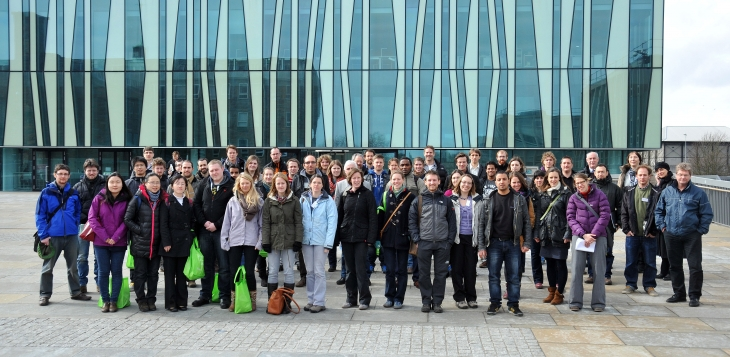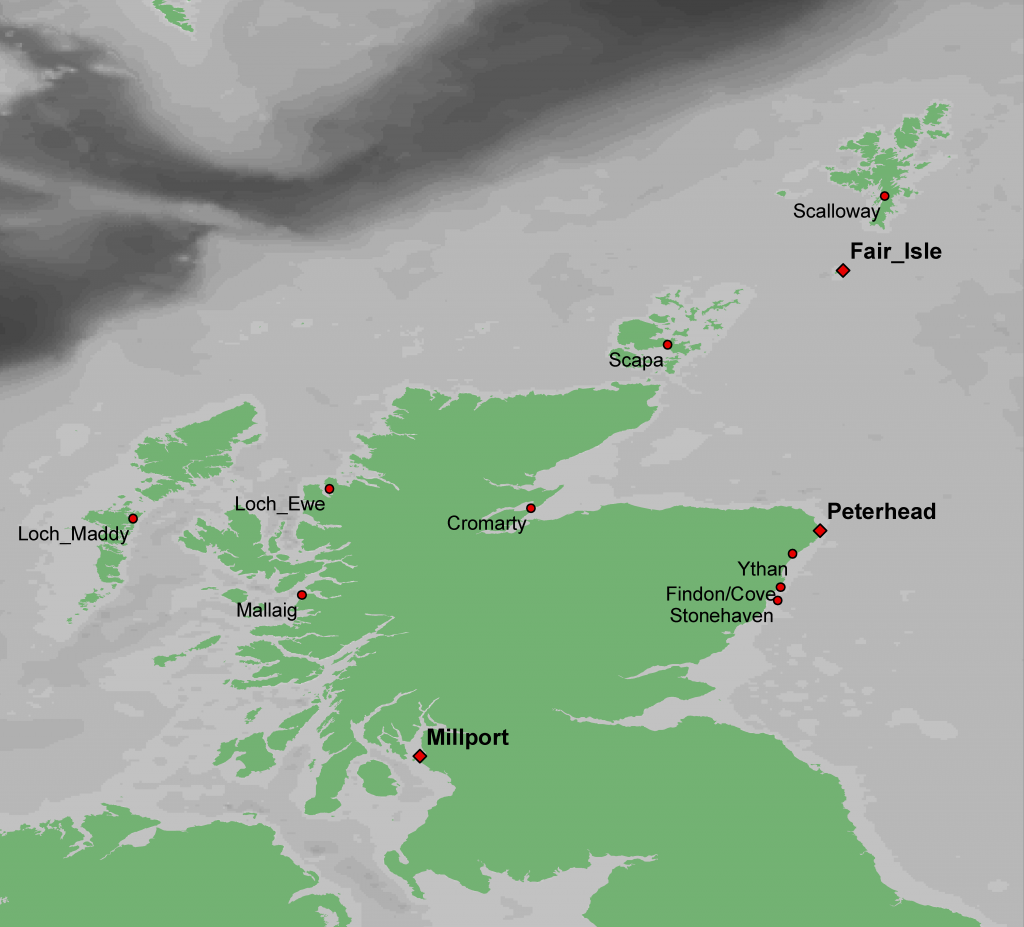Marine
The Young Coastal Scientists and Engineers Conference 2013
April 8, 2013 by sfraser 1 Comment | Category Marine Directorate Science
Submitted by Jenny Wright
The University of Aberdeen and Marine Scotland Science recently organised the 9th UK Young Coastal Scientists and Engineers Conference (YCSEC), with two of our oceanographers, Rory O’Hara Murray and Bee Berx, on the local organising committee. The conference was held at the University’s Fraser-Noble Building on March 25th and 26th 2013. Scientists and engineers came from across the UK to present results from their PhD-studies, post-doctoral work, or their research within governmental organisations and private companies. The conference started off with a great keynote lecture by Prof. Peter Thorne, from the National Oceanography Centre, Liverpool, on his work on sediment transport processes and the application of acoustic measurement techniques. This was followed by a number of oral presentations ranging in topic from the influence of structure shape on scour patterns to numerical modelling of larval connectivity to the tidal energy budget for the Pentland Firth. During the poster session on the first day, presenters had the opportunity to attract the audience to their poster by a 1-minute introduction on a soap-box.
It was a great conference for all involved, with early-career coastal scientists and engineers having the opportunity to share their research and network.
From the Oceanography Group, both Berit Rabe and I presented at the conference. Berit gave an oral presentation on the study of circulation and sea lice distribution in Loch Linnhe (the outcomes of an on-going multi-disciplinary study in the Aquaculture and Fish Health Science Programme) and I presented a poster on the long-term monitoring data from our coastal locations with co-authors Sarah Hughes, Bee Berx and Matt Geldart. The poster focussed on the long-term trends that we observe in the time series and the information that this data could reveal to us.
Location of coastal monitoring stations. The stations labelled in bold font are our longest time series. Millport dates back to 1909, Fair Isle dates back to 1979 and Peterhead dates back to 1977.
Temperature has been measured at the coastal monitoring stations for many years, with the oldest record dating back to 1909 in Millport. Since the dataset began in Millport we can see an overall increase in surface temperatures, but the question remains – why are these coastal waters warming? Is it due to atmospheric temperature increases? Or is there a change in the waters flowing into the area? The answers to these questions are still to be worked out.
Heat can be gained and lost from the seas through either vertical (incoming solar radiation, energy radiated back from the ocean, heat loss by evaporation or heat exchange by conduction across the air-sea interface) or horizontal heat transfer (through advection in currents).
In any given location the balance between these vertical and horizontal fluxes produces a net heat flux – whereby there is either net heat gain into, or net heat loss from the seas. Despite daily and seasonal changes in the heat fluxes, on average there should be a heat balance. Therefore when we can see changes that are occurring in the sea surface temperature at our coastal stations we can begin to think about how these changes are connected with changes in atmospheric and oceanographic conditions. A lot more work is required before we can fully understand these connections.
I was delighted that during the closing remarks of the conference my poster was awarded the ‘Best Poster’ prize.
Tags: climate change, coastal monitoring, oceanography




very interent this agenda